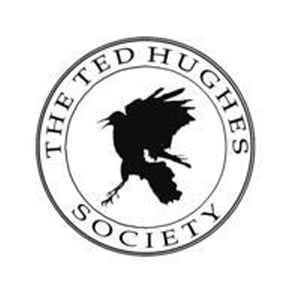Prose by Ted Hughes
The Iron Man (London: Faber and Faber, 1968)
Lorraine Kerslake (University of Alicante) explores Hughes's popular children's story
Ted Hughes is primarily known as Poet Laureate and one of the best poets of the last century, but he was also a prolifically creative writer for children. Perhaps his best known novel is The Iron Man: A Children’s Story in Five Nights, written as a bedtime story for his own children. In America the title was changed to The Iron Giant so as to avoid confusion with Marvel Comics’ character Iron Man. Later in 1989 Pete Townshend, from The Who, released a musical rock adaptation: The Iron Man: A Musical, although critical reaction to the record and sales were mostly negative. In 1999 Warner Brothers released an animated film, The Iron Giant, based on the novel, directed by Brad Bird and with Townshend credited as executive producer. The Iron Man was first published by Faber & Faber in 1968, and illustrated by Andrew Davidson. It has recently been republished by Walker Books (2010) in collaboration with Faber & Faber and features the drawings of Laura Carlin, which integrate artwork with the text in a far more compelling and resonant way than in the first edition.
Hughes outlined the moral purpose of his story and analyses the meaning of myths in his essay “Myth and Education”, 1970, where he expresses the idea that some kinds of imaginative stories can have a curative effect. Hence The Iron Man can be read on a more personal level, as a healing allegory, a story of redemption, a story of healing a fractured self: that of Hughes, after the recent suicide of Sylvia Plath, in 1963, later followed by the deaths of Assia Wevill and her daughter Shura. Half-way between a modern fairy-tale and science-fiction myth, The Iron Man describes the mysterious arrival of a giant “metal man” who comes from out of the sea, and after falling off a cliff manages to reassemble himself. The Iron Man only eats metal, and soon becomes a problem for the community of local farmers, feasting on their tractors and raining destruction on the countryside by attacking industrial farm equipment. In the narrative Hughes personifies the wake of the ongoing environmental conflict between the age of machines and technology, and the destruction of the environment, through human-induced changes to nature. However it also tells the story of friendship, betrayal and reconciliation between Hogarth, the little boy, and the Iron Man. The farmers decide to dig a giant trap and with the help of Hogarth they capture him and bury him. However, the Iron Man has a primitive power and magic about him, and after being buried he rises again. After reconciling, Hogarth decides to help the giant “metal man” by leading him to the scrap yard where he can indulge on the mountains of old cars and second-hand machines rather than on the tractors belonging to the local farmers. The Iron Man also functions as a counterpart to the George and the Dragon story, typified by the “Space-Bat-Angel-Dragon” which threatens the earth, and feeds on living things. After the people of the world have declared war on the Space-Being and used up all their weapons, the Iron Man defends the world from the Space-Being and competes with the dragon from space in a trial of strength. Withstanding the heat of the sun’s heart, the Iron Man wins, and the Space-Being is exiled from earth and finds its place in the universe by flying. In this way the movement of its wings restarts the music of the spheres, having a calming effect on the people of the earth, and bringing an end to all conflicts and wars all over the globe. At the end of the story culture and nature are again in harmony.
Lorraine Kerslake holds a BA in English and French studies and an MA in Translation and Interpreting from Alicante University, Spain, where she teaches English Language and Literature. She has worked as a translator of literary criticism and art and published essays on children’s literature. Her current research lines of interest include children’s literature, the representation of animals and nature in literature and art, and ecocriticism. She is currently researching and writing a PhD thesis on Ted Hughes’ children’s works and ecocriticism.
